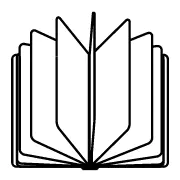No Products in the Cart

Created in 1952, Jackson Pollock’s “Convergence” is one of the American artist’s most famous drip paintings. It first came out as a jigsaw puzzle in 1964. Then one of the world’s most difficult puzzles at a mere 340 pieces, it has sold more than 100,000 copies over the decades. Today’s puzzle devotees have the choice of a 1000-piece edition that would seem to make defeat inevitable. Or would it? Give it a shot and you’ll begin to feel the puzzle’s appeal, but you’ll also grasp the unusual challenge it poses: you’ll spot five matching pieces on a good day and not a single one on a bad day—the picture is just too jumbled, the details too apparently unconnected. On amazon.com, one reviewer warns would-be buyers: “May lead to insanity in previously sane people; may bring sanity to previously insane people.” Perhaps the puzzle might have helped Jackson Pollock cope with his mental health issues? More likely, however, it’ll drive previously well-adjusted puzzlers mad and acquaint them with utter futility. What’s certain is that it’ll teach them to look hard: painstaking comparison of the reproduction’s different layers is the only way to solve the riddle.
With his new artist’s book, Volker Renner offers a training course in such “comparative seeing.” For Reconstructing Jackson Pollock, the artist placed each individual piece of the puzzle on a canvas and took its photograph. Instead of assembling the pieces, he has arranged them in the format that is characteristic of his approach more generally: the sequence. This makes the pieces not only pictures but also a metaphor for photography itself: a photograph never represents more than a segment of the larger totality of reality, and how it relates to other such segments is a question that fuels ongoing debates but—like the Pollock puzzle—is never definitively resolved.
Published by Volker Renner and Textem Verlag
Hardcover
1008 pages
120 x 170 mm
ISBN 9783864851940


